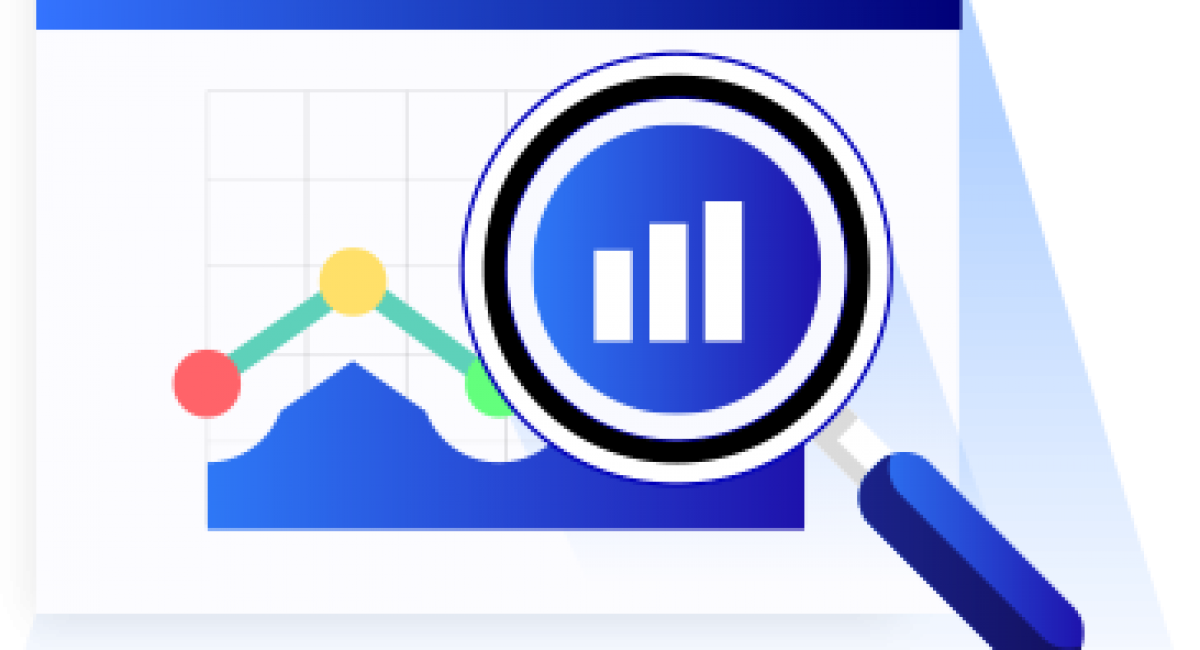SEO
At the early inception of the internet, search engines were introduced and, although not sophisticated, they served as a means to providing quality web content indexing and as a starting point for that online browsing navigation, which resulted as an essential source of traffic for websites. Subsequently, professionals recognized the need for conscious control to increase the visibility of websites on the search results pages, resulting in an innovation: SEO designed to grow the qualitative traffic of a website.
SEO is everything!
What is SEO?
Quite simply, SEO is the abbreviation term that stands for – search engine optimization; and this is specific methods you can use to increase the visibility of your website ranking and its content on Google and other search engine results pages (SERPs).
There are many methods that vary in technical practices you can achieve on your website (this is referred to as ‘on-page SEO‘) to all the promotional ‘off-page’ approaches you can use to raise your site’s visibility.
Visibility means how high up the SERP your website appears for specific search terms/keywords in the ‘organic’ results.
SEO includes a series of operations performed by an expert team to increase the ranking of a website in the search results for specific search terms (keywords) or phrase that are of interest and relevance to them from a commercial or business point of view.
The term SEO can be simplified to be explained as techniques that you can use to improve your website’s ranking on search results pages, such as Google and Bing. If you want more free internet traffic, you should focus on it, and your brand will do well.
SEO can be complicated when you dive deep into the technicalities and what is involved on a large whole picture scale, However, it is relatively easy for you to understand the basics and implement them on your website. And just by understanding and implementing the ABC, you’ll be one step ahead of your competitors in many cases.
This is achieved by controlling and improving the “classification criteria”, i.e factors that are analyzed together with the search algorithm and contribute to better positioning in the results pages. Considering these criteria, referencing can be don in two ways:
Internal Optimization (On-Site SEO)
The promotional efforts are inputted directly to the website in question. They depend on it, but above all, only the SEO team can make this happen.
For example: carefully writing the copy for titles, descriptions, fixing bugs, improving loading speed, image processing, optimizing the structure URLs and internal links, moderately using ads, etc.
External Optimization (Off-Site SEO)
The external optimization refers to situations where the promotion is not directly related to the SEO team, but with the collective will of the internet.
This means that search engines, depending on the objective reality regarding the quality of a website, are still trying to find measurable signs regarding the relevance and importance of the website candidate versus the search term. These signals relate to indicators of quality, performance and popularity.
Here are some examples: the number and quality of links pointing to the page being analyzed, the amount of social media interactions (Facebook likes, Shares, Comments, Tweets, Twitter Retweets, etc.), the context in which the references arises, the credibility and authority of the sources, the global and local search volume for each keyword, etc.
Due to tremendous commercial potential of the internet, shortly after the entrance of search engines so-called “spammers”, people who practice unethical or illegal manipulation of classification criteria to improve the quality of SEO quality, the visibility of websites have surfaced there. For a short-term, these techniques may work, but experience shows that search engines are continually fighting against online spam and always eliminating threats found lurking as a hole in the web system.
This experience led to the publication of the official documents describing the “WebMaster Policies”, i.e., the ethical, legal, authorized and recommended advertising practice policies that every site owner should consider. If you do not follow these principles, your site can get penalized or banned from the search engine index forever.
Depending on the degree of the morality of the techniques used during the SEO process of the website, the referencing can be subdivided into:
White Hat SEO
Promotion perfectly follows the guidelines proposed or suggested by the search engines. The techniques used aims at giving visitors a positive experience, but not specifically to increase the ranking on the search results pages.
Black Hat SEO
The purpose of the promotion is to manipulate the perception of the search engines concerning the quality (relevance and importance) of the website – for example, keyword stuffing, optimization, business links, etc.
Grey Hat SEO
Is both Black and White Hat SEO where, although moral principles are followed, some practices are still questionable and could be discovered and punished in the long run.
As the internet developed, so did the SEO concept It now covers other branches that help increase page traffic, not just organic searches. SEO is not only great content or just website optimization. SEO is not about manipulation or magic. It is more of a harmonious combination of science, poetry and magic. The objective truth is that SEO is not dull or uninteresting. It’s more of a sport where the level of satisfaction is great when you are on the winning ways, and you would not like to lose, do you?
We need SEO because building a strong site architecture and providing straightforward navigation will help search engines index your site quickly and easily. But much more importantly, SEO provides all visitors with a good experience of using your site and encourage repeat visits. It’s worth considering that Google & Bing are increasingly paying attention to all user experiences online.
When it comes to how much-targeted traffic is delivered by Google and Bing search engines to your site, the percentage is substantial, and perhaps the clearest indicator of the importance of SEO.
In 2015, 6% of all web traffic came from organic search, compared to 3% from social, 6% from paid search, 12% direct and the rest from other referral sources.
Of all organic traffic, in 2017, it was found that Google is responsible for more than 85% of the worlds organic search traffic. This is why you need a strong presence on Google SERPs.
Therefore your site must appear in the top three results.
A Breakdown of How To Achieve SEO On Your Website
First, run a scan through your website and structure it so that each page is built around a consistent theme.
You are doing this because search engines aims to always provide users with the information they are consistently and still in search of. For search engines to do this, they need to understand the content of their websites.
The following tips will help you achieve ranking success.
By building each page (every single page) of your website around a single topic, you can more easily organize and present your page if it’s relevant to a search
Then select the keywords that will help you optimize each page. Think about the keywords people will likely use to find the information on this page.
What Factors Are Search Engines Looking For?
Relevancy
All search engines try their best to provide the most relevant results to a searcher’s keywords or query, whether it’s a simple answer to the question “how old is John Travolta?” to more difficult queries such as “where is the best steak restaurant in Sydney?”
The way in which the search engines provide these results is down to their specific secret algorithms, which we’ll probably never truly know many details about, but there are 1300 factors that you can be sure will influence these results, and they’re all based around relevancy to search details… For instance: a searcher’s location, a searcher’s history, the searcher’s time of the day/year, etc.
The Quality of Your Content
Are you regularly publishing helpful, educational articles, videos or other types of media that is popular and produced well? Do you write for real human beings instead of search engine itself? If you are not, Well, you should. The latest research on ranking factors indicates that Google and Bing are moving towards longer-form content (longer and more educational) that understands a visitor’s intention as a whole, instead of just using keywords based on the specific popular search queries/keywords to create content.
What this means in a nutshell, is stop worrying about just keywords and focus on user experiences.
User Experience
There are major SEO benefits for providing top user experience. You need a website that is easy to navigate, is easily searchable and with relevant internal linking and related specific content. Pretty much everything that keeps visitors on your website and hungry to explore further.
Site Speed
How fast your website loads is becoming a differentiator increasingly for all search engines. Because it decreases the chance of people not waiting for your website to load, therefore leaving and not engaging with your product or service
Cross-Device Compatibility
Are your webpages and all their content equally optimized for any given screen size? Please keep in mind that Google wants responsive designs as the preferred method of mobile optimization.
Internal Linking
We have said there are many benefits of ensuring your website has a clear and easy-to-use the navigation. However, also importantly there’s an SEO practice that editors and writers should carry out when publishing articles to attract a lot of traffic around the website and that should lead to higher trust signals for search engines like Google: internal linking. (See what we did here.)
Internal linking has major benefits:
- Internal linking provides your audience with further reading options as long as they are very relevant, and you use exact anchor text (this is the clickable highlighted words in any given link). This can help decrease your bounce rates.
- Internal linking helps to improve your ranking for certain keywords. If you want this specific article to rank for this term: ‘SEO Basics‘ then you can start linking to it from different other post using little variations of similar anchor text/s. This sends the signals to Google that this post is relevant to people searching for ‘SEO Basics“.
- Also, it helps Google crawl and index your site. Those amazing Googlebots that are sent out to crawl new information on your website will have a much better idea of how useful and trustworthy your content is, the more they fetch your internal links.
Authority
A high authority website is a site that is trusted by its many of its users, and the industry it operates in, other websites and the search engines. In the past, a link from a high authority website is very valuable, because it’s seen as a big vote of confidence. The more (non-spammy links) of these you have, and the higher quality content you produce, the more likely your website will become a higher authority as well.
However, SEO Agency PTY LTD’s research suggests, as the years go by, correlations between backlinks and rankings are decreasing, therefore maybe over time ‘links’ may not be as crucial to SEO as once thought to be.
Meta Descriptions and Title Tags
Specifically having meta descriptions may not (or it may sometimes) necessarily improve your ranking on the SERP, but you should definitely do it before publishing an article as it can definitely help increase your chances of the searcher clicking on your website as a result.
A meta description is the short paragraph of the text that appears under your page’s URL in the search results, (this is super important) it’s also something you should have complete control of in your Content Management System (CMS).
Title tags are there to tell the search engines and new visitors what your website is about most accurately. All the keywords in your title tag show up highlighted in search engine results, they also display in your browser tab and when sharing your website externally.
You can write your own (anything that’s specific to your page) title tag inside the <head> area of your site’s HTML:
<head>
<title>Example Title</title>
</head>
It would be best if you used an accurate keyword describing the page as well as your own business brand name. You should only use relevant keywords.
As explained above, search engines look at the title of the page, also known as the title tag, to understand the content of the page. They also display it on the search results.
A bit more detail:
Page titles must be unique and contain the most critical segmented keyword of this page. The title should be convincing enough to generate interest of about 60 characters or less. Also, keep in mind that the words at the beginning of the title have more SEO weight than the following. Therefore, you should try to start your title with your keyword
Page Description
The search engines display the description under the title of each page on the results page so that search engines can determine the best link to click.
A good page description is essential because the information you enter greatly influences the user’s decision to click on your link or someone else’s link. The description must also be unique and cannot be longer than 160 characters.
Headings
The website code refers to titles from <h1> to <h6>. These simply define the size of their titles as they appear to the reader. Of these six levels of headers, H1 is the largest and H6 is the smallest.
Headers are more than just shortcuts to change the size and face of your text quickly. It is a way of you telling search engines that the keywords in the heading are very important. It’s a great way to use your specific keywords. Remember, you only need to use one H1 header per page. This is your main title, and you should specify your most important keyword.
Then you can spray your primary keywords and others through your text. But do not exaggerate. Excessive use of keywords is called keyword stuffing. This can annoy your readers and cause Google to penalize your pages in their search rankings.
Image ALT Description
The ALT tag is used to display descriptive text when an image cannot be displayed. The use of image-sharing texts makes sense for users who prefer to surf the internet with images disabled. Most important to you, search engines cannot read numbers or text in images, let alone understand the context of the image itself.
Your keywords can be fantastic and catchy in a picture, but the only way for search engines to see them is the ALT tag associated with the image. Therefore, creating ALT tags and pasting their specific keywords into them is another useful SEO technique.
URL Structure
The URL is the address of the page. The words used in the URLs send one of the most vital signals to the search engines regarding the content of the page. URLs must contain the most important keywords for this page. You should also try avoid strings in URLs that make no sense to the visitor. Only lower case letters and numbers should be used, and hyphens should replace spaces.
Schema Markup
Make all your search results appear more attractive to the search engines and humans by adding schema markup to the HTML of your website pages. This helps turn your search results into a rich media playground, adding star-rating, customer ratings, images, and various other bits of helpful information.
Schema markup is also the preferred method of markup by most search engines, including Google and Bing.
Properly Tagged Images
Do not forget to include the alt attribute when you upload images to their specific content, and it is something you shouldn’t overlook because Google and Bing cannot ‘see’ your images (in 2021), but can ‘read the alt text’
When you describe your image in the alt text, it will increase the chances of all your images appearing in Google and Bing image searches.
It will also improve the accessibility of your site for people using ‘screen reader’ software.
Headlines and Permalinks
The headlines for your articles should be under 50 characters to ensure they completely visible to the SERPs. You have to make sure they’re snappy, attractive and very descriptive. Make sure you do not promise something that the content on your site doesn’t deliver.
Comments
You should not turn off your comments system in your site. Having an interested community of regular commenters engaging in dialogue under your new posts shows that visitors care enough about your website content to make their own relevant points and agree with your brand’s voice.
Make sure you learn about how filtering our spam comments can be done immediately removed.
Recently Google is mostly serving results to users based on their location. This is super important to companies out there in the real world who need to grab a searcher’s attention just at the right time, i.e. while walking down the street, on their mobile and looking for a restaurant.
You need to register with Google My Business and make sure all of your information is 100% accurate and up-to-date.
Social
A key critical obvious way that you can raise your website’s visibility through non-technical SEO work is, of course, through online social media marketing.
To help success in this social media world. Make sure you’re present on all relevant social channels, and not just broadcasting your content in a faceless manner (this becomes white noise), but by using it as a genuine customer service channel but interacting with everyone in a friendly, helpful and meaningful manner.
The correlation between social signals and search rankings is a controversial subject, but it is better to be safe than sorry.
What Are Search Engines NOT Looking For?
So many ‘black hat’ practices that can give you a “Google Penalty” down on your website, so it’s best to completely avoid doing the following even if it looks like a brilliantly easy way to in at that specific time.
Keyword Stuffing
Using the same keywords over and over on your pages, especially when they negatively affect the readability of your website. It’s debatable whether Google even uses keywords as a ranking factor anymore.
Link Buying
Are you thinking of approaching a link farm? Just don’t do it. It’s not worth it at all. The only real valuable links to your website are the links that come from authority sites within your own niche.
Annoying Ads
Anything intrusive that destroys the pleasure of reading your content and slows down your website speed.
Mobile App Interstitials
By presenting mobile visitors with full-screen adverts to download your brand app, Google will consider you no longer mobile friendly.
Duplicate Content
If Google or Bing finds two identical pieces of content, whether on your own site or on another you’re not even aware of, it will only index one of those pages. There are scraper sites that steals your content automatically and republish it as someone else’s, so be careful.
Hidden Texts and Links
There are many ways to manipulate search engine rankings that a user may not ever even see, but Google or Bing will probably find and punish you for it.
Do not use white text on a white background, positioning text off-screen, setting font size to zero or hiding a ling in a single character like a comma or a full-stop.
How Do You Choose Your Keywords?
- Write out your pick for the 5 to 10 most relevant keywords for the page.
- Go to Google Adwords. If you do not have a Google Account yet, create an account. It’s free.
- Go to the Tools menu in Google Adwords and select Keyword Planner.
- Select Find New Ideas for keywords and ad groups. This takes you to a page where you can enter the keywords you have entered as well as the address of the page to be optimized and the category of products/services.
- After entering your information, click the “Get Ideas” button.
- Just below the Search Volume trends graph, you’ll see two tabs. Ad group ideas and keyword ideas click the Ideas tab for the keyword. It was a little hard to reach, but it’s the magic side
- Here you can link your search terms (the keywords you entered) and find the average monthly searches for each one. Now you know if people are looking for the keywords that have appeared and how often they are doing it. You want to make sure that the keywords you want to optimize for your page are as popular as possible, yet are very relevant to the topic of your page.
- Search terms include suggestions for Google keywords and your own average monthly searches. Search for relevant keywords with high average monthly searches.
- Now create your final list of five relevant keywords and your own average monthly searches. These are your specific keywords to optimize your website. It’s probably a combination of some of your own keywords and those suggested by Google.
Keywords
Enter your list of five specific keywords for the page. If you write them here, it will help you optimize the other components.
Helping Your Pages Scale Up The Ranks
If you create SEO trees for each of your webpages and sure you have optimized the six components, you’ve covered the key aspects of search engine optimization. It will definitely help to increase your website’s ranking of search results.
In some industries where online marketing is strong, it may not be enough to have your website appear on the first page of meaningful search results. But without optimizing these components, it is highly unlikely that your website will be eligible for research that does not include the name of your brand or company
Implementing Your Work
Now that all your content is optimized, it’s time to implement it on your website. If your website is created using a content management system (CMS) such as WordPress, any changes can be made quickly without the help of a programmer.
Of your site is created using and earlier proprietary system, you need to give your SEO trees to your programmer so that you can implement your optimization work on each page.
SEO is Constantly Evolving
Search engines are constantly changing the analytics, which is used to rank sites in their search results. What is important now may not be so crucial in two or tree years.
A development of recent years is the growing importance of social networks in search rankings. Regularly participating in social platforms such as Facebook, Youtube, and LinkedIn increases the likelihood that your site will become more critical in search results.
Great Content is Your Best Weapon
One thing that will undoubtedly be important to SEO is the need for good content. When people search for answers, search engine strive to find and provide the best pages to deliver those answers.
So, your best strategy for reaching and staying at the top of search results is to create content that updates regularly. This will allow you to position yourself as the market leader in your field, attracting more visitors than you can turn into customers.
SEO
















